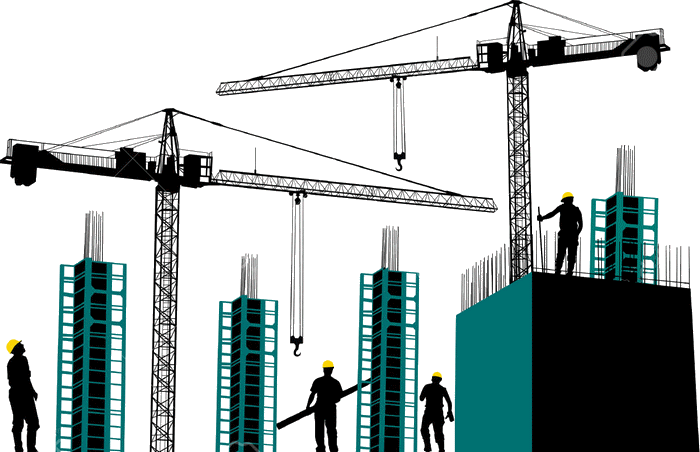

What is a scaffold?
A scaffold is a temporary structure erected to support access or working platforms. Scaffolds are commonly used in construction work so workers have a safe, stable work platform when work cannot be done at ground level or on a finished floor.
Scaffolding means the individual components, for example tubes, couplers or frames and materials that when assembled form a scaffold. Scaffolding is classified as plant under Work Health and Safety (WHS) Act.
Scaffolding work is erecting, altering or dismantling a temporary structure erected to support a platform and from which a person or object could fall more than 4 metres from the platform or the structure. Scaffolding work must be undertaken by a person holding the appropriate class of high risk work licence. This definition applies whenever the term 'scaffolding work' is used in this Guide.

Who has duties under the law..
Everyone in the workplace has work health and safety duties. A range of people have specific responsibilities for scaffolds and scaffolding including..
- Designers, manufacturers, importers and suppliers
- Scaffolding contractors and workers who carry out scaffolding
- Workers and other people

How can risks be managed..
Use the following steps to ensure, so far as is reasonably practicable, that workers and other people are not exposed to health and safety risks.
- Observe the workplace to identify areas where scaffolds are used or scaffolding work is performed and where there is interaction with vehicles, pedestrians and fixed structures.
- Look at the environment in which the scaffold is to be used including checking ground conditions.
- Identify the major functional requirements of the scaffold like the maximum live and dead loads and access requirements.
- Inspect the scaffolding before and after use.
- Ask your workers about any problems they encounter or anticipate at your workplace when constructing or interacting with scaffolds and scaffolding work-consider operation, inspection, maintenance, repair, transport and storage requirements.
- Inspect the erected scaffold.
- Review your incident and injury records including near misses.
The ways of controlling risks are ranked from the highest level of protection and reliability to the lowest. This ranking is known as the hierarchy of risk control. You must work through this hierarchy to manage risks.
The first thing to consider is whether hazards can be completely removed from the workplace. For example, risks can be eliminated by carrying out work at ground level or on completed floors of a building.
If it is not reasonably practicable to completely eliminate the risk then consider the following options in the order they appear below to minimise risks, so far as is reasonably practicable..
- substitute the hazard for something safer e.g. using mechanical aids like cranes, hoists, pallet jacks or trolleys to move equipment and materials wherever possible instead of manually lifting scaffolding
- isolate the hazard from people e.g. install concrete barriers to separate pedestrians and powered mobile plant from scaffolds to minimise the risk of collision, and
- use engineering controls e.g. provide toeboards, perimeter containment sheeting or overhead protective structures to prevent objects falling hitting workers or other people below the work area.
If after implementing the above control measures a risk still remains, consider the following controls in the order below to minimise the remaining risk, so far as is reasonably practicable..
- use administrative controls e.g. storing scaffolding as close as practical to the work area to minimise the distance over which loads are manually moved, and
- use personal protective equipment (PPE) e.g. hard hats, protective hand and footwear and high visibility vests.
A combination of the controls set out above may be used if a single control is not enough to minimise the risks.
You need to consider all possible control measures and make a decision about which are reasonably practicable for your workplace. Deciding what is reasonably practicable includes the availability and suitability of control measures, with a preference for using substitution, isolation or engineering controls to minimise risks before using administrative controls or PPE. Cost may also be relevant, but you can only consider this after all other factors have been taken into account.
The ways of controlling risks are ranked from the highest level of protection and reliability to the lowest. This ranking is known as the hierarchy of risk control. You must work through this hierarchy to manage risks.
The first thing to consider is whether hazards can be completely removed from the workplace. For example, risks can be eliminated by carrying out work at ground level or on completed floors of a building.
If it is not reasonably practicable to completely eliminate the risk then consider the following options in the order they appear below to minimise risks, so far as is reasonably practicable..
- substitute the hazard for something safer e.g. using mechanical aids like cranes, hoists, pallet jacks or trolleys to move equipment and materials wherever possible instead of manually lifting scaffolding
- isolate the hazard from people e.g. install concrete barriers to separate pedestrians and powered mobile plant from scaffolds to minimise the risk of collision, and
- use engineering controls e.g. provide toeboards, perimeter containment sheeting or overhead protective structures to prevent objects falling hitting workers or other people below the work area.
If after implementing the above control measures a risk still remains, consider the following controls in the order below to minimise the remaining risk, so far as is reasonably practicable..
- use administrative controls e.g. storing scaffolding as close as practical to the work area to minimise the distance over which loads are manually moved, and
- use personal protective equipment (PPE) e.g. hard hats, protective hand and footwear and high visibility vests.
A combination of the controls set out above may be used if a single control is not enough to minimise the risks.
You need to consider all possible control measures and make a decision about which are reasonably practicable for your workplace. Deciding what is reasonably practicable includes the availability and suitability of control measures, with a preference for using substitution, isolation or engineering controls to minimise risks before using administrative controls or PPE. Cost may also be relevant, but you can only consider this after all other factors have been taken into account.
Reference(s) ..
